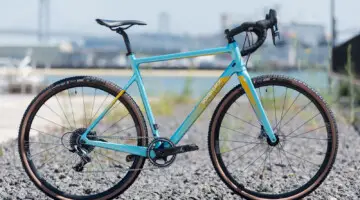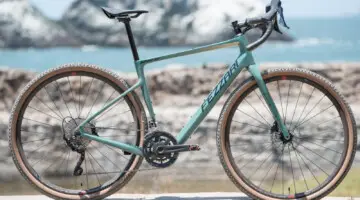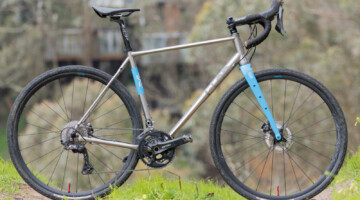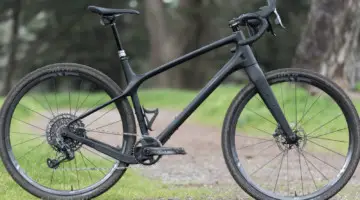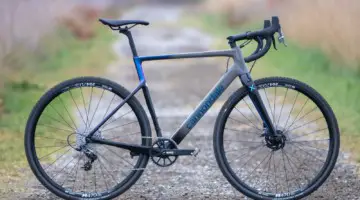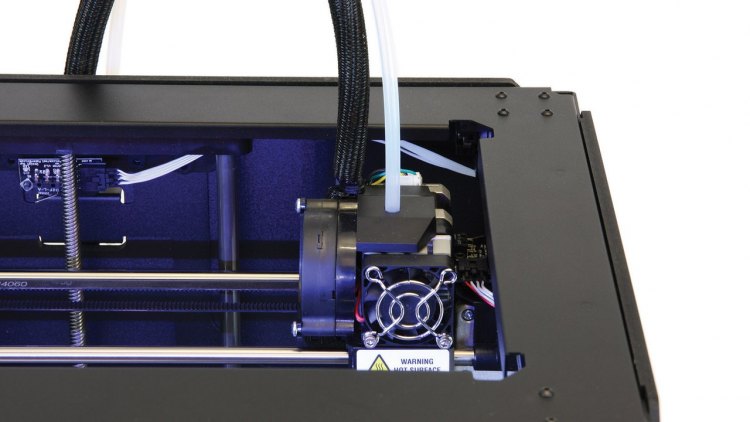
3D printing technology has become larger scale in the last few years. How will it affect the bike industry? Photo by Creative Tools from Flick’r.
James Barrymore wouldn’t be surprised if you haven’t heard of him. He has spent the last few years trying to keep his name hidden away from the cyclocross community. But all of that is about to change.
You see, Barrymore used to be a bike counterfeiter.
“When anyone sees a Pinarello or a Colnago knockoff online, they immediately imagine some overseas factory cranking out thousands of frames per year,” he explained. “While that’s likely, it’s not always the case. In this day and age, the advancements of 3D printing allow for anyone with an eye for computer design to build their own counterfeits.”
Barrymore went on to brag that if someone could identify a bike as a forgery online, it probably wasn’t his. He was less interested in producing carbon frames as inexpensively as possible as he was discovering a “hands-off” process whereby his 3D printer constructed everything from start to finish.
“The headache was finding the the right combination of resin and thermoplastic raw material that could be manipulated by a printer-head while providing a relatively safe product,” he explained. “The need for carbon fiber in the traditional sense goes right out the window.”
The dangers of 3D printed bikes have been well documented, such as in the video below posted by Carleton University engineering students:
“When you create a product that can’t stand up to the first test ride, the game is over,” Barrymore explained of bike counterfeiting. He chose to focus on cyclocross bikes specifically due to the harsh nature of the sport. “The goal was to see if I could get these frames to outlast a full season in a sport that is cruel on materials. And in that respect, I’d say it was a roaring success.”
While he wouldn’t admit which brand he chose to counterfeit and sell online, he did claim only to produce one model over a 15 month period. The difficulty wasn’t in manufacturing, but affording a painter who could put all of the exacting details on the frames. Barrymore admits this is the only area where large factories had a leg up on him.
Still, he was able to produce and sell over 50 frames in 2014 alone for a sizable profit. Late in the year, however, auction crack downs on forged bikes finally caught up to him.
“It was a stupid catch, and I remember getting really sore about the whole thing,” Barrymore explained. “Here I had this innovative process with a relatively safe product, and my market was stripped right out from under me.”
Instead of calling it quits, Barrymore decided to invest in his own brand for 2015. “We have this large consumer-base wanting to engage in a sport where riders are trashing their $7,000 bikes. So instead of offering a frame that could theoretically last a lifetime in ideal conditions, we’re targeting racers who understand that a cyclocross bike is really a four-month product.”
According to him, his 3D printing process still needs refining to mimic the weight and compliant nature of traditional carbon fiber bikes. “You’re talking about adding a pound and a half to a frame on average, and the added stiffness might be discernible by pro riders and longtime reviewers. Still, you’re also talking about a bike that will soon be a tenth of the cost of what you’re paying now… It’s the biggest step I know of towards the ‘ultimate disposable race machine.'”
He explained how excited riders would be knowing that they could keep getting the latest frame technology year after year without worrying about breaking the bank. “Just imagine not only getting the opportunity to get a new cyclocross bike every year, but practically being obligated to get one with each new season!” Barrymore said.
Barrymore declined to comment on how exactly his frames eventually fail or fatigue after a three to four month season of racing, but he is looking at his first batch of frames, which he calls the Barrymore Reborns, to be released by September of this season. Details will be released within the month on a new Facebook page.
Other bicycle companies have used 3D printing to create longer-lasting products, such as Fabric’s 3D printed titanium saddle, or TRP’s Shimano electronic shifting mount, but Barrymore is committed to temporary products.
What’s next for the frame printer? “I’ve got to take these beauties to NAHBS 2016. Locally printed bikes? That’s a shoo-in for the overall best cyclocross bike right there.” NAHBS might have to revise some of their rules to allow his entry, however, considering that he calls his process a full “hands-off” approach to manufacturing, a name that the “hand built” show might have an issue with.
Stay tuned for more updates on the Barrymore Reborns as the details come in.
Note: this story was published on April 1, 2015, an Internet holiday.























